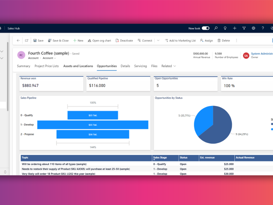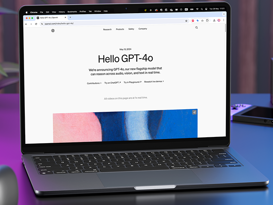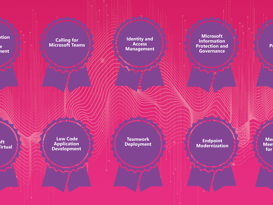Artificial Intelligence
Artificial Intelligence
Artificial Intelligence as the Key to Success
Artificial intelligence is a very broad and diverse field that deals with the replication and augmentation of human intelligence by machines. However, it was the availability of massive computing power from the cloud that gave development the necessary boost. Do you want to know how you can optimize your business process with the help of AI? With our years of experience, we evaluate suitable use cases in your company and show you how you can drive innovation profitably and create competitive advantages.
Starter Package
isolutions AI Starter Package
The Power of Collaboration: Person and Machine in Harmony
Artificial intelligence is often seen as a threat to humans. This perception is not least a result of the way in which AI and its capabilities are advertised. AI can indeed take over work previously done by humans and, in many cases, do so more accurately and, above all, tirelessly. However, AI needs an order to do something and must be assessed accordingly. This is usually determined by a «natural» intelligence - i.e. a person.
A popular example of such an apparent threat from generative AI is ChatGPT. ChatGPT is based on a large language model that can identify intentions in a text and generate text based on instructions. This works amazingly well, but only if the AI is given the right instructions and if the generated text has the expected precision, length and tonality.
This is where many opportunities are hidden, because the actual creativity remains with humans, whereas the generation of the output (stringing syllables together and applying the correct punctuation) is done by a machine. The full potential of AI lies in the optimal use of your existing data. We combine your business models with technology and a user-friendly interface to create solutions that your employees can use efficiently.
Advantages of AI
Why you should rely on Artificial Intelligence
Automation of work processes
Better decisions and recognition of trends
Increased speed of innovation
Increased efficiency
Cost savings
Better risk management
The transformation of the way we work is within reach. Seize this opportunity! We can help you with your challenges. Data is often difficult to use, whether due to different data sources or a lack of quality. In addition, there is often a lack of internal know-how to categorize these huge amounts of data and understanding the data potential can also be overwhelming. We create valuable knowledge from your data, automate work processes, implement applications and help you to use AI in your company in a targeted manner.
Application Scenarios
What is already possible with Artificial Intelligence today
AI is often used as a building block or combination of building blocks to improve a process or supplement an existing solution and is not necessarily directly visible to the end user. We then experience generative AI with ChatGPT or Microsoft Copilot, for example.
The chats with company data (e.g. knowledge databases) use the Large Language Model (LLM) of generative AI to recognize the intent of a search query and place an order with the search engine. The results are summarized and deep links to the sources are embedded. The summary helps the person searching to recognize more quickly whether they are looking for the right information.
In language processing, AI can help with various tasks, such as transcribing texts or translating texts from one language into another (e.g. DeepL or Google Translate). AI can also help with the analysis or generation of texts. However, AI can also generate program codes from natural language.
The generation or modification of images or videos based on a description is an application area of weak AI. These models can generate new visual content or modify existing visual content by using the description as input. An example of this is the generation of images according to specific wishes or the modification of an image by adjusting the color or shape of an object.
Weak AI is used for analytical tasks, such as recognizing patterns or anomalies in time series and predicting their development. For example, a model can be trained to recognize anomalies in the telemetry data of technical systems and provide a forecast for the probability of their occurrence. This can indicate the failure of a system component so that maintenance can be carried out that is more cost-effective than an unplanned repair.
With key-value extraction, texts, key-value pairs, tables and structures are automatically and precisely extracted from documents. In this way, documents (with unstructured data) can be converted into usable data and the focus can be placed on processing information. Examples include finding the most frequent complaints in customer reports, extracting values from invoices or relevant information from forms (e.g. Form Recognizer).














































